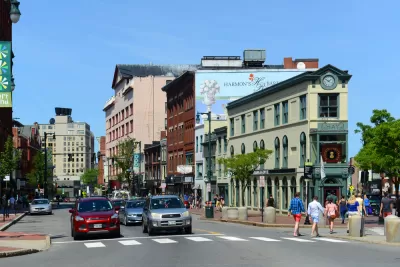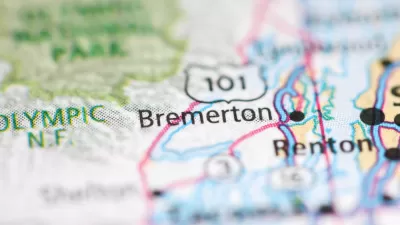The housing affordability crisis is a legislative priority in the Pine Tree State.

"Data from MaineHousing shows more than 57% of all renters in Maine do not make enough money to afford the median cost of rent and utilities for a two-bedroom unit," reports Ross Ketschke for WMTW.
According to the article, a "surging population and a highly competitive market" are to blame for the state's worsening housing affordability challenges. "Despite flurries of developments throughout the state, housing advocates have seen demand far out-pace available supply of affordable units," writes Ketschke.
The MaineHousing report also estimates that "49.1% of all renters are cost-burdened by housing expenses, meaning they spend more than 30% of their income paying for a place to live," adds Ketschke.
The report was presented to Maine legislators with policy recommendations intended to counteract rising housing prices, including zoning codes that increase residential density—in the form of fourplexes and accessory dwelling units—similar to increasingly common reform laws in other jurisdictions.
Maine is certainly not alone in its struggles to supply housing that most residents can afford. As detailed in a recent Planetizen blog post, the "America’s Rental Housing 2022" report published in January by the Harvard Joint Center for Housing Studies (HJCHS) presented evidence rising rents and vanishing supply all over the country in 2021.
FULL STORY: Report suggests changes to local zoning to expand affordable housing

Planetizen Federal Action Tracker
A weekly monitor of how Trump’s orders and actions are impacting planners and planning in America.

Maui's Vacation Rental Debate Turns Ugly
Verbal attacks, misinformation campaigns and fistfights plague a high-stakes debate to convert thousands of vacation rentals into long-term housing.

San Francisco Suspends Traffic Calming Amidst Record Deaths
Citing “a challenging fiscal landscape,” the city will cease the program on the heels of 42 traffic deaths, including 24 pedestrians.

Defunct Pittsburgh Power Plant to Become Residential Tower
A decommissioned steam heat plant will be redeveloped into almost 100 affordable housing units.

Trump Prompts Restructuring of Transportation Research Board in “Unprecedented Overreach”
The TRB has eliminated more than half of its committees including those focused on climate, equity, and cities.

Amtrak Rolls Out New Orleans to Alabama “Mardi Gras” Train
The new service will operate morning and evening departures between Mobile and New Orleans.
Urban Design for Planners 1: Software Tools
This six-course series explores essential urban design concepts using open source software and equips planners with the tools they need to participate fully in the urban design process.
Planning for Universal Design
Learn the tools for implementing Universal Design in planning regulations.
Heyer Gruel & Associates PA
JM Goldson LLC
Custer County Colorado
City of Camden Redevelopment Agency
City of Astoria
Transportation Research & Education Center (TREC) at Portland State University
Jefferson Parish Government
Camden Redevelopment Agency
City of Claremont





























